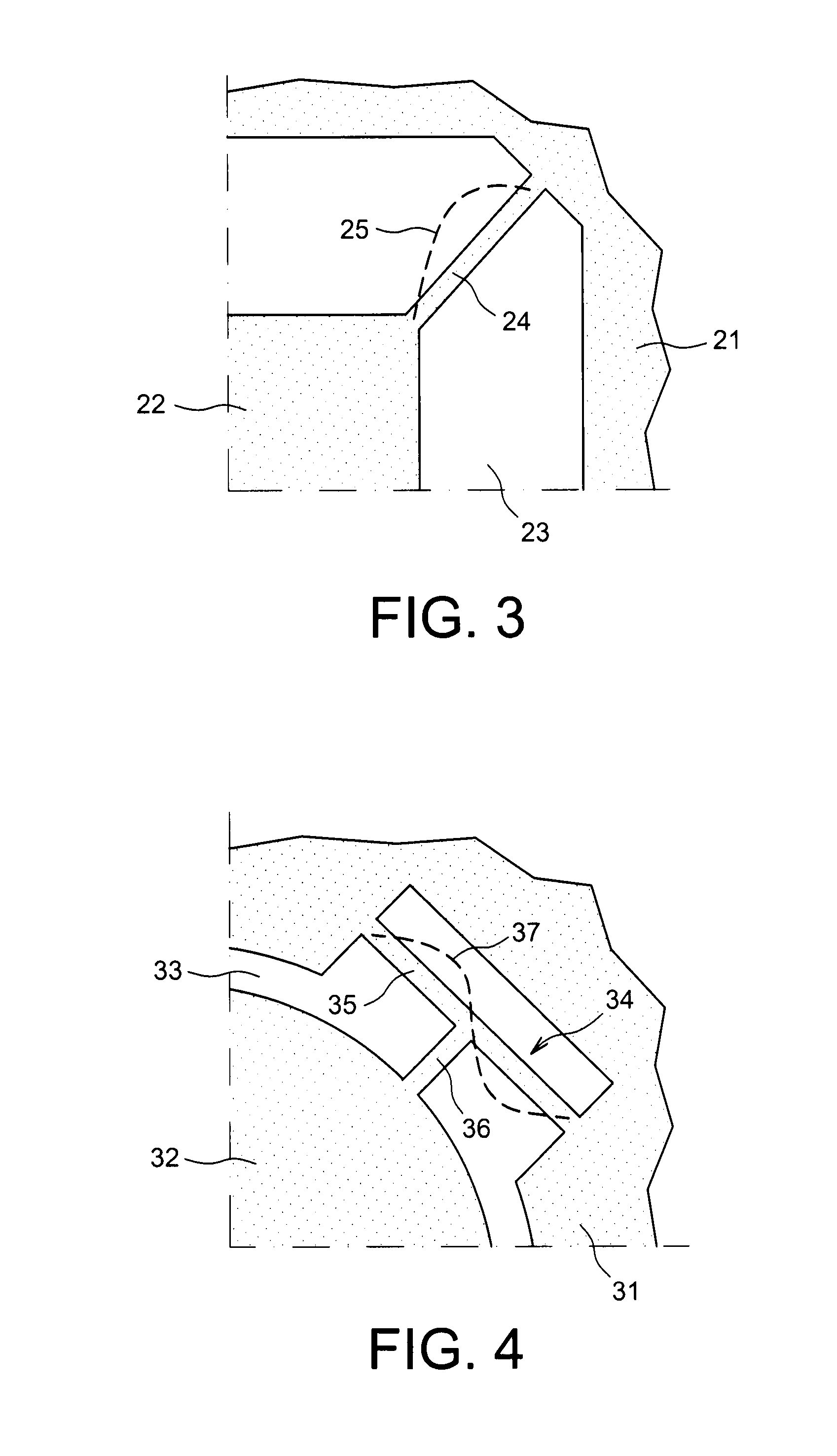Electromechanical resonator with resonant anchor
a technology of electromechanical resonators and resonant anchors, applied in oscillator generators, instruments, computing, etc., to achieve the effect of low effective stiffness and greater design freedom
- Summary
- Abstract
- Description
- Claims
- Application Information
AI Technical Summary
Benefits of technology
Problems solved by technology
Method used
Image
Examples
first embodiment
[0064]FIGS. 9A to 9D illustrate the invention,
second embodiment
[0065]FIGS. 10A to 10G illustrate the invention.
DETAILED ACCOUNT OF PREFERRED EMBODIMENTS
[0066]Generally, the oscillator according to the present invention includes the resonant structure proper generating the clock frequency, and an anchor structure which it is sought to cause to resonate at the same frequency as the resonant structure. The method of design of the resonator may be as follows:[0067]choice of the frequency of the clock signal to be generated,[0068]choice of the shape of the suspended structure (square, circular, ring-shaped, any shape, etc.),[0069]choice of the dimensions of the suspended structure in order that one of its natural modes is the chosen frequency,[0070]subsequent choice of the shape and position of the anchor structure which is to be made to resonate at the same frequency as the suspended structure,[0071]modelling of the suspended structure and of the anchor structure, to determine the dimensions of the anchor structure considered, in order that both st...
PUM
 Login to View More
Login to View More Abstract
Description
Claims
Application Information
 Login to View More
Login to View More - R&D
- Intellectual Property
- Life Sciences
- Materials
- Tech Scout
- Unparalleled Data Quality
- Higher Quality Content
- 60% Fewer Hallucinations
Browse by: Latest US Patents, China's latest patents, Technical Efficacy Thesaurus, Application Domain, Technology Topic, Popular Technical Reports.
© 2025 PatSnap. All rights reserved.Legal|Privacy policy|Modern Slavery Act Transparency Statement|Sitemap|About US| Contact US: help@patsnap.com



